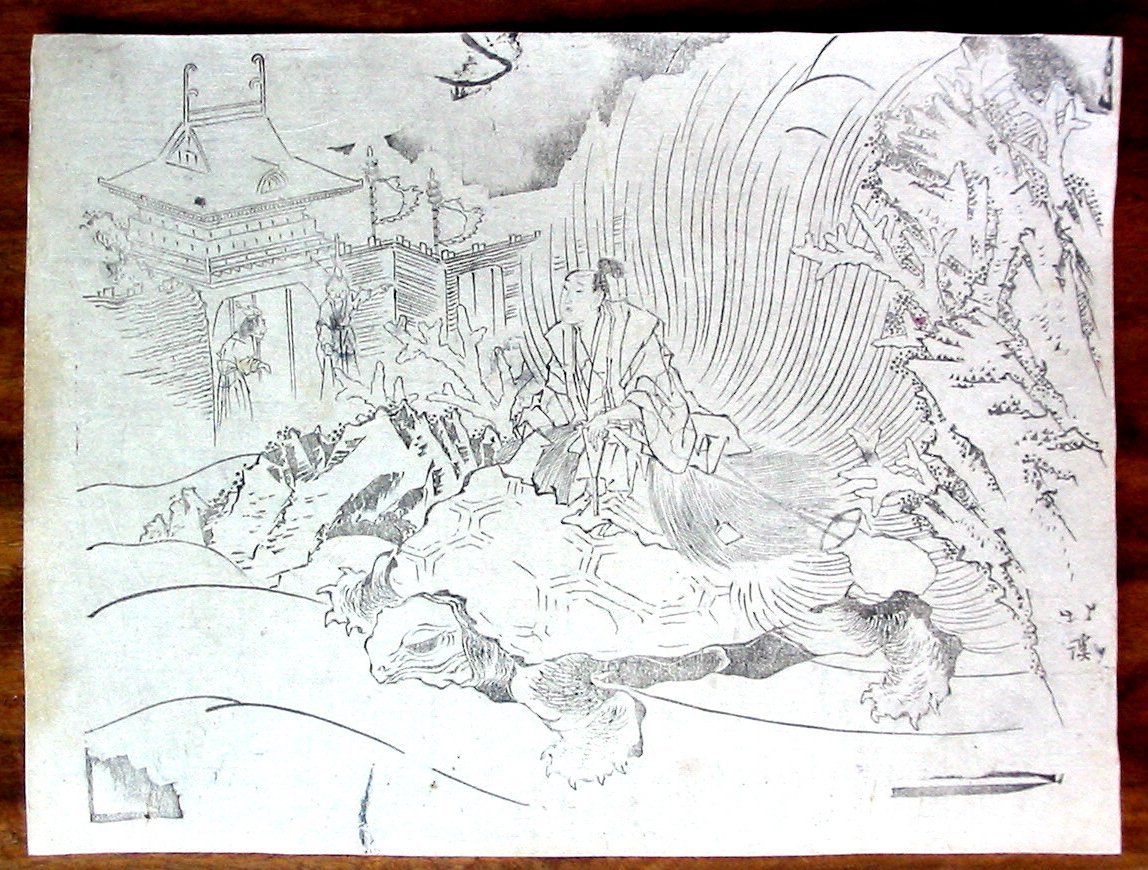
JAPANESE PRINTS
A MILLION QUESTIONS
TWO MILLION MYSTERIES
Ukiyo-e Prints浮世絵版画 |
|
formerly Port Townsend, Washington now Kansas City, Missouri |
|
|
Totoya Hokkei |
|
|
|
魚屋北溪 |
|
|
|
1780-1850 |
|
|
|
Urashima Tarō astride the tortoise near the palace of the dragon king |
|
|
|
Surimono keyblock print |
|
|
|
Size: 8 3/4" x 11" |
|
|
|
Date: Mid 1830s? |
|
|
|
Signed: Hokkei |
|
|
|
Publisher unknown Privately printed |
|
|
|
Condition: Full size, minor soiling, album backing. |
|
|
|
$185.00 NO LONGER AVAILABLE! |
|
|
|
|
FOR ALL OF YOU WHO ALREADY KNOW THE STORY OF URASHIMA TARŌ Here is somethng a bit different. |
|
|
|
As we have noted elsewhere every fable seems to have a multitude of variations. Some are based on facts and others clearly are pure fantasy. But none of the ones we grow up hearing and adopting as part of our own sense of the world are set in stone. That leads us to the story of 'Umisachi's Pantomime'.
"Umisachi [海幸?], the godly fisherman, and Yamasachi [山幸], the godly hunter, exchanged their tools for their own amusement. The experiment, however, had no success. Yamasachi lost his brother's hook, and could not find any way to placate Umisachi's anger. The desperate Yamasachi was miraculously taken to the palace of the sea-god [Watatsumi?], who most kindly regained for him the lost hook, and also gave him his daughter as wife. Later, Yamasachi received as a present the two jewels which command the ebb and flow of the tide. Whenever Umasachi would abuse his brother, Yamasachi retaliated with sudden changes of ebb and tide. Umisachi had to give in, and became his brother's subordinate wazaogi (performer), dancing the pantomime of his desperate struggle against the quickly rising waters..."
We are not exactly sure about the kanji used for these names yet. So, stay tuned. This may change in time. Umi no sachi 海の幸 means seafood or bounty of the sea; Yama no sachi 山の幸 refers to mountain vegetables
Note the similiarities between this story and that of Tarō - that is, if you know it already - if not, we will post it shortly: A visit to the palace of the dragon king under the sea, the princess and the jewels. Obviously the Umisachi account must have influenced that of the Tarō. |

